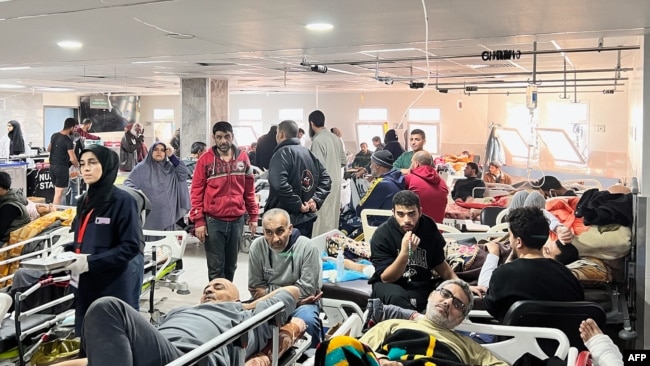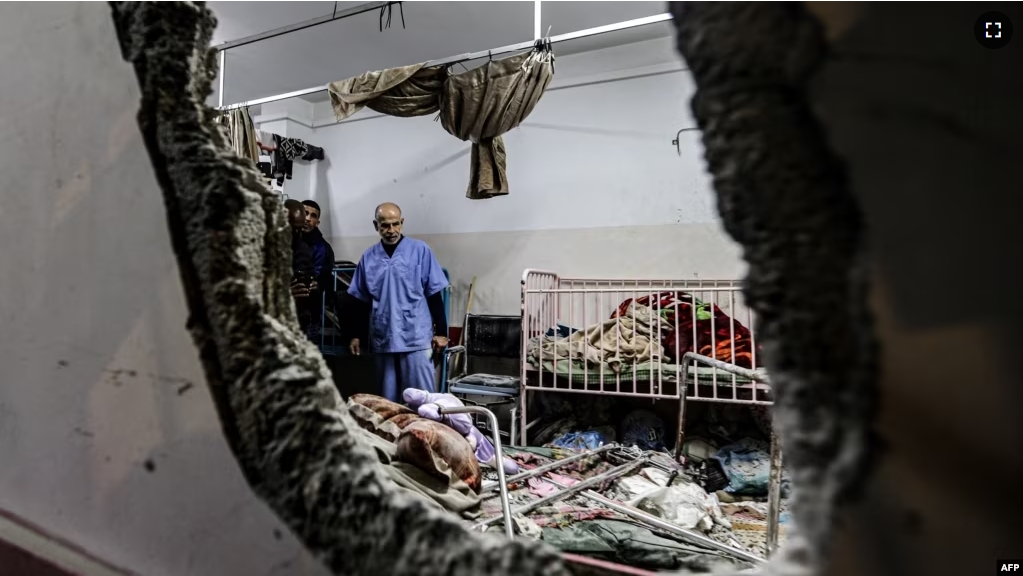A World Health Organization (WHO) official who recently returned from the Gaza Strip said recently that the health care system is collapsing. He said more workers and supplies are needed.
WHO Health Emergency Officer Sean Casey told reporters at the United Nations: “I’ve seen the health care system collapsing before my eyes.”
Casey spent five weeks in Gaza, starting in early December. While there, he met with medical professionals and patients across the territory.
“I saw patients in hospitals every day with severe burns, with open fractures, waiting hours or days for care, and they would often ask me for food and water,” he said.
Casey said a cease-fire is needed. But he also said the ability to move people and aid supplies safely and quickly within Gaza would help ease suffering.
Reports say Gaza had a strong health care system with 36 hospitals and 25,000 doctors, nurses and specialists before Hamas militants attacked Israel on October 7. Now, the WHO says, about 15 hospitals are partially operating. That makes getting care difficult for the more than 50,000 injured people.

Casey said there is a shortage of supplies but also of workers. Many of them are displaced and struggling to survive and care for their own families.
“There are unbelievably brave health workers across Gaza who are staying and taking care of people because there is no one else to do it,” he said.
Casey was in Gaza to see how to bring in more international medical teams.
He said getting supplies to northern Gaza is especially difficult. During the five weeks that he was there, his team was unable to provide supplies to the largest hospital in the north, al-Shifa, for 12 straight days.
At Al-Ahli hospital, also in the north, Casey said the situation was very bad.
“I saw patients who were lying on church pews, basically waiting to die in a hospital that had no fuel, no power, no water, very little in the way of medical supplies,” he said.
Israel has accused Hamas of stealing aid supplies. Casey said he had not seen evidence of that during his hospital visits.
“I have no evidence of supplies that have been delivered to hospitals going anywhere except to those hospitals,” he said.
Dr. Seema Jilani is an emergency health expert with the International Rescue Committee. She returned recently from a two-week visit to Gaza with five British doctors.
Jilani is a children’s doctor who has worked in conflict areas including Afghanistan, Iraq and Lebanon. She said, “In my experience of working in conflict zones around the world, this is the most extreme situation I have seen in terms of scale, severity of injuries, number of children that have suffered that have nothing to do with any of this.”
Jilani worked in the emergency room at Al-Aksa Hospital in Deir al-Balah, the only hospital in the middle area of Gaza. Jilani said she treated children who had lost arms and legs and who had extreme burns.
After she left, Jilani said, the hospital ran out of fuel and the lights went out. She does not know what has happened to the babies she treated or whether they have been moved to a safer place.
I’m Dan Novak.
Margaret Besheer wrote this story for Voice of America. Dan Novak adapted this story for VOA Learning English using additional reporting from The Associated Press.
_______________________________________________
Words in This Story
fracture — n. a broken bone
pew — n. a long bench used for sitting in a church
zone –n. an area that is different from other usually because something is happening there, or it is being used for a certain purpose
scale — n. the level to which something is large or small
